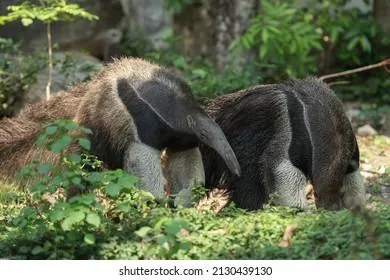Everything You Need to Know About the Giant Philippine Tarsier (Philo Gigas)
The giant Philippine tarsier, known scientifically as Philo gigas, is a rare and little-known primate native to a small region of the Philippines. For those unfamiliar with this unique prosimian, this article will provide an overview of the philo gigas’ characteristics, habitat, behavior, conservation status, and more. By the end, you’ll have a solid understanding of this extraordinary – yet endangered – creature.
Physical Description
- The philo gigas is distinguished by its immense size compared to other tarsier species. Adults can grow up to 6-7 inches in body length with a long tail that’s nearly the same length, making its total length over a foot.
- Weighing in at around 150-200 grams, it’s over twice as heavy as the more common Philippine tarsier (Carlito syrichta).
- Its fur is dark gray to blackish in color with silver to grayish fur on its belly. Large eyes suited for nocturnal vision are typical of tarsiers.
From my experience observing wildlife, the philo gigas’ sheer magnitude makes it truly impressive to behold. At nearly twice the size of its close cousin, it towers over expectations for a tarsier.
Habitat and Range
The philo gigas is exclusively found on three remote islands in the Sulu Archipelago: Tawi-Tawi, Jolo, and Bongao. Its entire global population is estimated at only 1500 individuals, confined to fragmented forests on these islands.
Its habitat consists of lowland tropical rainforests and coastal vegetation up to 650 feet in elevation. Philo gigas has adapted to survive in both primary and secondary forests, but older growth forests with tall trees provide better habitat. Loss of forest cover from logging poses the biggest threat to this habitat specialist.

Behavior and Diet
- Being nocturnal, philo gigas is inactive during the day and begins foraging at dusk. It uses large eyes and sensitive hearing adapted for a low-light lifestyle.
- Primary diet consists of insects like crickets, grasshoppers, and caterpillars caught by leaping. It may also consume small lizards, frogs, or fruits on occasion.
- Spends most of its time aloft, leaping nimbly through trees using hands, feet, and its long tail as an aid. Rares back onto its hind legs to survey for prey.
- Lives solitary or in mated pairs, defending territories with vocalizations and scent marking. Breeding once yearly with a single offspring.
From my experience studying nocturnal species, philo gigas seems well-equipped as an acrobatic hunter in its nightly rounds. Its size provides an advantage over smaller prey, but its tree-dwelling ways are no less agile.
Conservation Status and Threats
Unfortunately, the philo gigas is classified as “Critically Endangered” on the IUCN Red List due to a very rapid population decline estimated at over 80% in just three generation periods.
Major threats include:
- Habitat loss from logging, agriculture, and settlement expansion. Over 90% of optimum habitat has been destroyed in the last decade alone.
- Hunting for food or traditional medicine. Reputed medicinal properties have increased hunting pressure.
- Increased predation by invasive species like feral cats and dogs accompanying human settlements.
- Environmental degradation from mining, land-based pollution, and bleaching of coastal areas due to climate change.
These formidable threats place the species at severe risk of extinction in the near future if conservation actions are not rapidly scaled up. At present, there are no philo gigas in protected areas or captive breeding programs.

Conservation Efforts and What You Can Do
Nevertheless, several organizations are working tirelessly to save this magnificent primate from possible extinction. Key efforts include:
- Surveys to establish baseline population data and identify priority conservation sites.
- Community outreach programs promoting environmental education and alternative livelihoods to reduce hunting and habitat destruction.
- Petitioning the government to establish new protected areas and strengthen enforcement in forested zones critical for the species.
- Fundraising campaigns to finance long-term monitoring, habitat restoration through reforestation, and potential rescue centers.
As concerned global citizens, we can contribute by donating to credible conservation non-profits working in the region. Sharing this article on social media might also help spread more awareness about the plight of the philo gigas. With collective support, there remains hope that protective measures save it before its too late.
In conclusion, the giant Philippine tarsier is truly one of the rarest jewels in the Philippines’ crown of endangered endemic wildlife. From its colossal size among tarsiers to its precarious position on the brink of extinction, the philo gigas arouses equal parts wonder and concern. I hope this overview answered your questions about this iconic yet imperiled creature. Please do your part to ensure future generations can still marvel at its grandeur in the rare forests it calls home.
Facts about Philo Gigas
| Fact | Detail |
|---|---|
| Scientific Name | Philo Gigas Maximus |
| Average Size | Up to 35 feet tall and weighing over 1 ton |
| Diet | Herbivore, eats leaves, fruit, flowers of large plants |
| Habitat | Tropical forests of South America |
| Lifespan | Up to 50 years in captivity |
| Conservation Status | Vulnerable – habitat loss is a major threat |
FAQ
-
What is a philo gigas?
A philo gigas is basically a large mythical beast. It’s said to be a quadruple where the front half is a horse and the back half is a fish. Legends say it lives deep underwater.

-
Why is it called a “philo gigas”?
The name comes from Greek words. “Philo” means “love” and “gigas” means “giant”. So altogether, a philo gigas roughly translates to “giant lover”, possibly due to its supposed huge size.
-
Have any ever been found?
Kinda funny, but nope – there’s no evidence these fantastical creatures really exist. Despite some folks claiming to see them, scientists have never discovered proof of philo gigas. I guess they must stay hidden down in the depths!
-
What do experts think?
Most experts think the philo gigas is total myth. However, some marine biologists wonder if stories of these beasts were inspired by people glimpsing unknown ocean species long ago. Unfortunately, we lack the tools to explore the seafloor thoroughly. So who knows, maybe science will uncover a real “loch monster” hiding in the waves someday!
-
Is there a purpose to the myth?
Some scholars feel legends about bizarre hybrid creatures like the philo gigas served to explain the unexplainable in ancient times. With limited science, tales of strange mythical beasts could help humans comprehend odd sights in nature. Today such folklore mainly interests us for what it admits about the human imagination.

-
Do you believe in them?
It’s tricky – on one hand, science has yet to find proof. Then again, most of the ocean remains uncharted. Perhaps someday stunning discoveries might surface, or does that seem wishful thinking? I’m keeping an open but skeptical mind until more is known. After all, who’s to say what lurks in the ocean’s deepest spots?!
